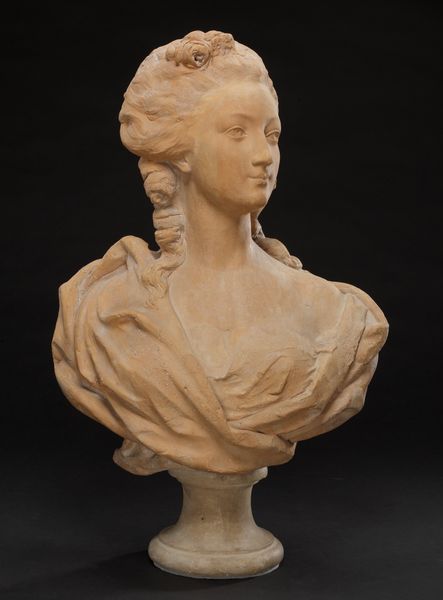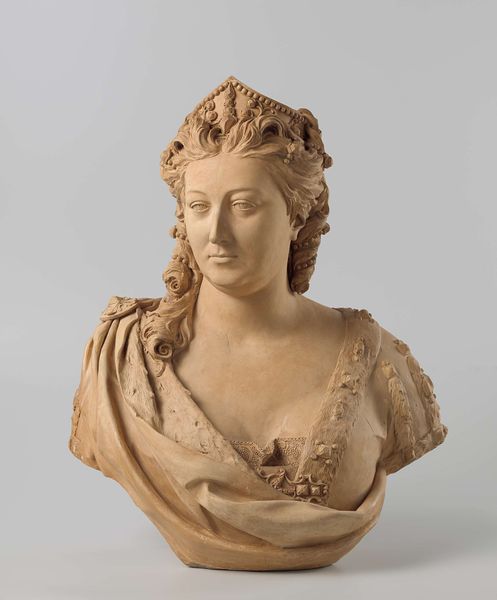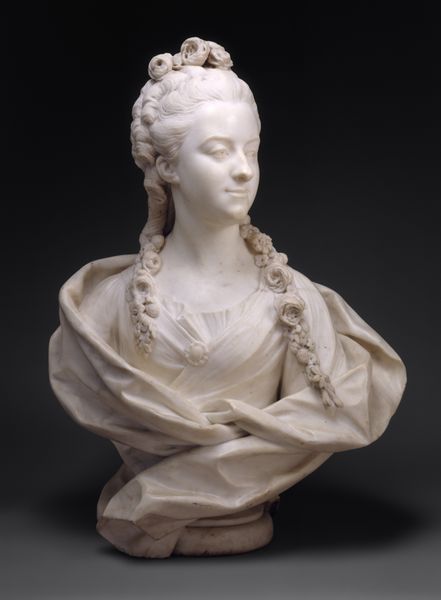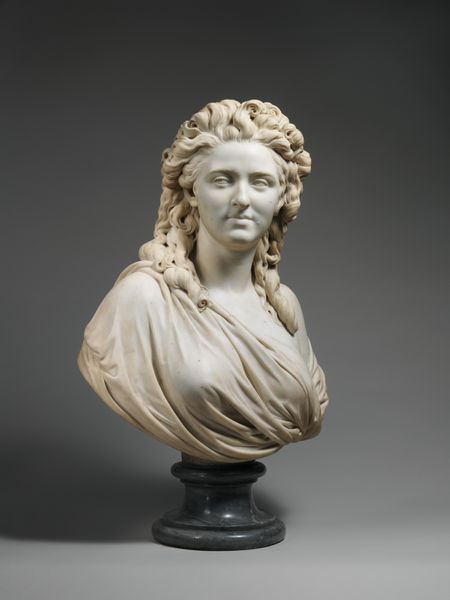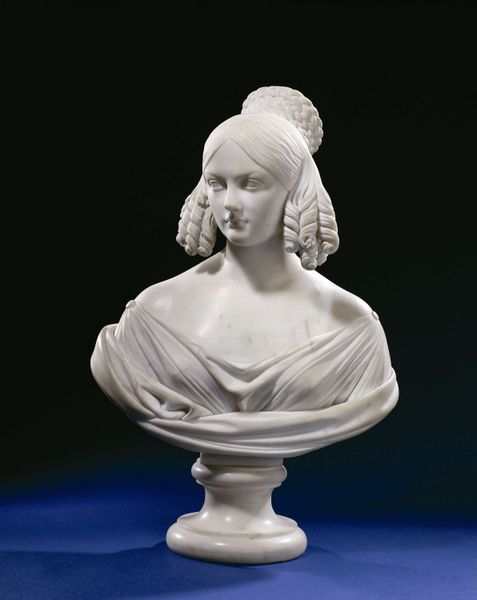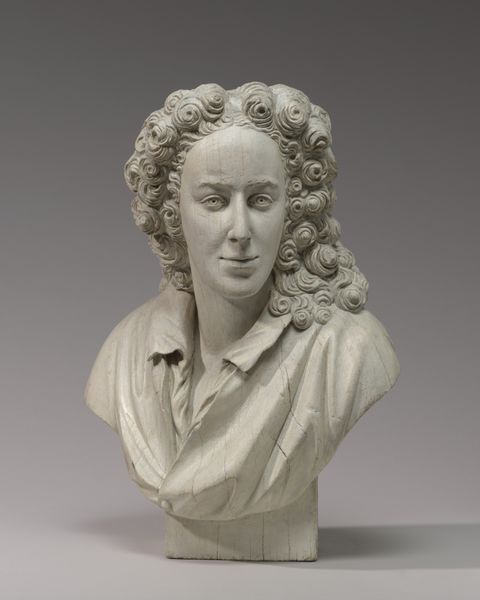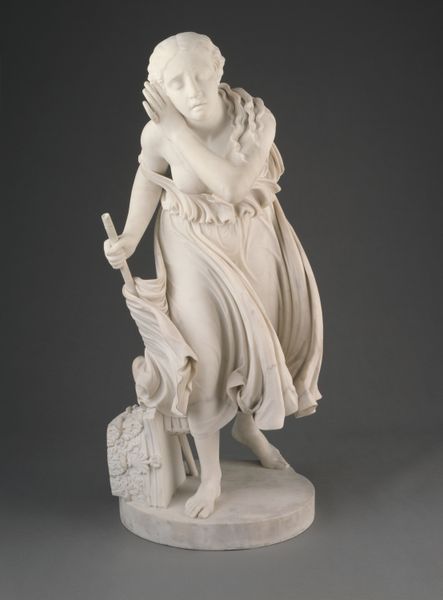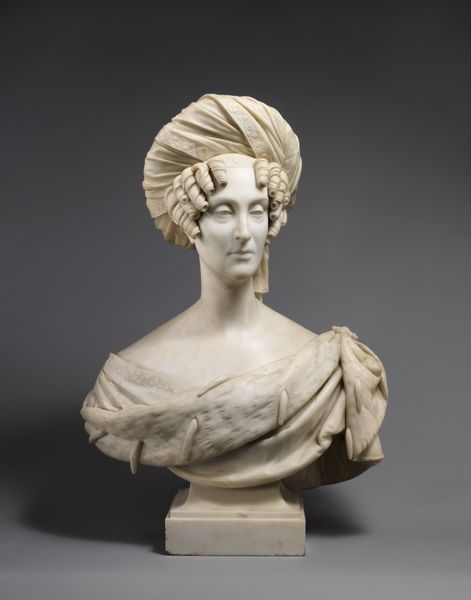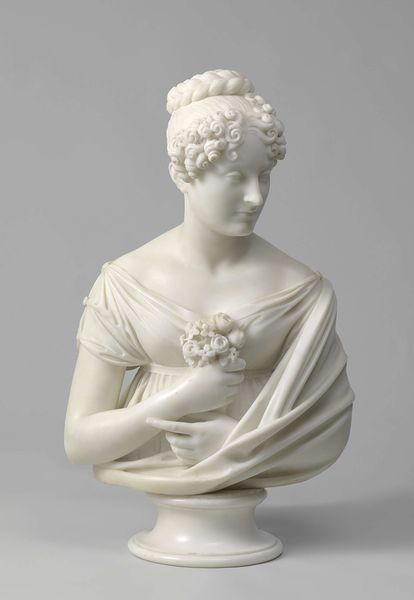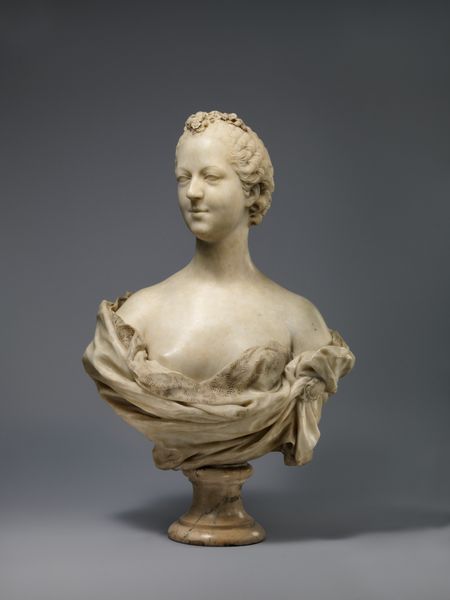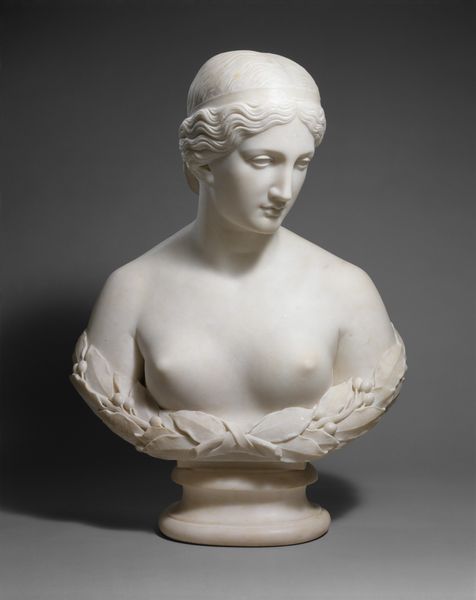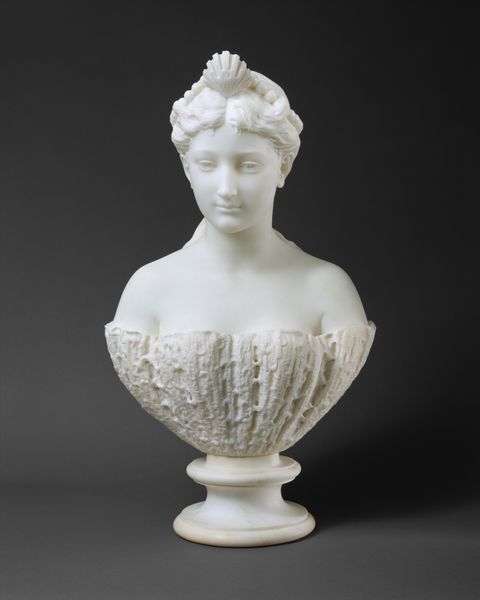
Bust of Anne-Marie-Louise Thomas de Domangeville de Sérilly, Comtesse de Pange 1780
0:00
0:00
sculpture, marble
#
portrait
#
neoclacissism
#
stone
#
sculpture
#
sculptural image
#
figuration
#
classicism
#
sculpture
#
france
#
marble
#
statue
Dimensions: H. 89.9 cm (35 1/4 in.)
Copyright: Public Domain
Curator: Looking at Jean-Antoine Houdon’s marble bust of Anne-Marie-Louise Thomas de Domangeville de Sérilly, Comtesse de Pange, sculpted in 1780, you can almost feel the chill of the stone. Editor: Indeed. The coolness of the marble perfectly captures a certain reserve in her expression, a sort of aristocratic detachment. The texture alone telegraphs an aura of timeless dignity. Curator: Neoclassical sculpture often invokes ideas of virtue and enduring legacy. The clean lines and balanced composition point to a desire to immortalize the sitter as a figure of grace. Her gaze is averted, but not shy; more like contemplating something just beyond our view, her family's standing, perhaps. Editor: Notice how Houdon employs a calculated asymmetry, however subtle. The drapery is casually arranged but clearly not accidental. The flowing lines contribute to an active surface dynamic that contradicts the stillness implied by the marble medium itself. Is this sculpture about permanence, or is Houdon pointing toward the fleeting nature of existence despite marble’s seeming immutability? Curator: Think about what it meant to be sculpted in marble at that time. It was about conveying social status and ideals, and Neoclassicism was the perfect vehicle to channel it all: civic virtue, idealized beauty, aristocratic elegance. This idealized depiction served to bolster the subject's place within society and affirm lasting dynastic impressions. Editor: Yes, but the visual rhetoric is masterful as well. Consider how light interacts with the surfaces, and it shapes perception, highlighting specific aspects of character, almost animating a marble form through a series of visual cues. What would semiotics say? Is it ever possible to separate material analysis from sociocultural messaging? Curator: Very difficult, I’d argue. A portrait bust such as this wasn’t merely decorative; it served as a potent symbol, imbuing the subject with significance for generations. Looking at it today reminds us of France's history but also raises questions about portraiture, representation, and the perpetuation of certain identities over time. Editor: Seeing this sculpture again reminds me to embrace contradiction: between its aesthetic presentation and intrinsic philosophical inquiries. What may seem simple becomes more intricate the deeper you examine it. Curator: Precisely; the visual language gives way to cultural dialogues, as relevant now as they were then.
Comments
No comments
Be the first to comment and join the conversation on the ultimate creative platform.
